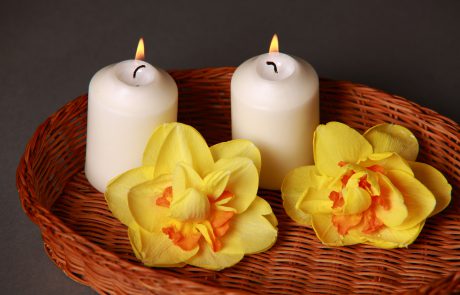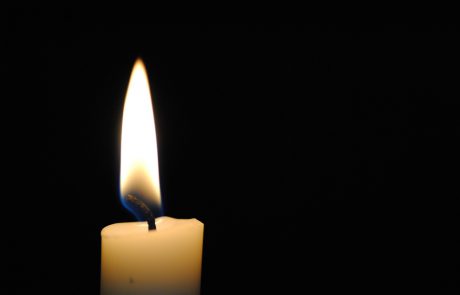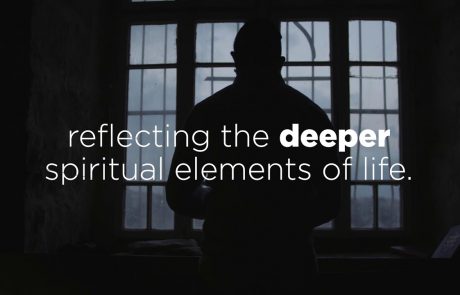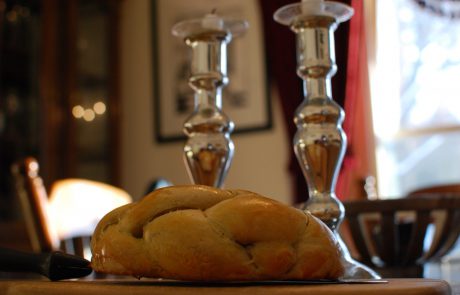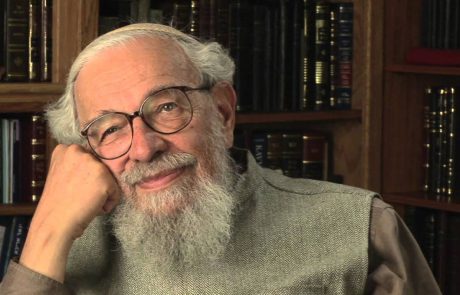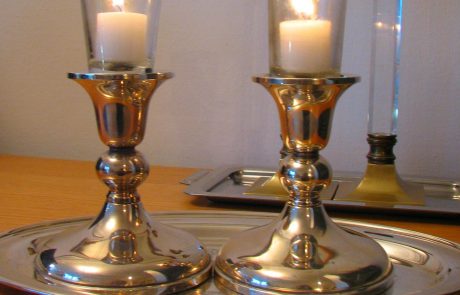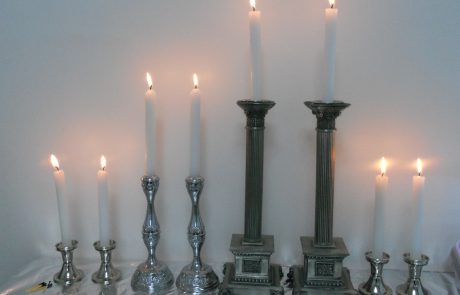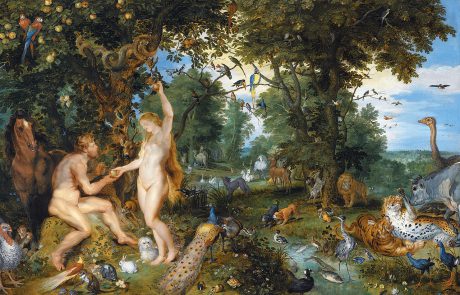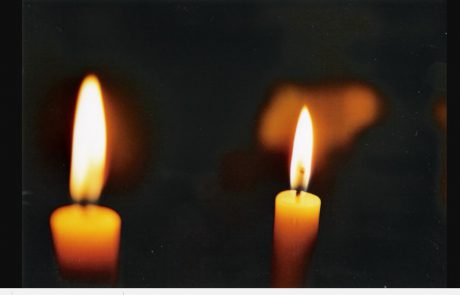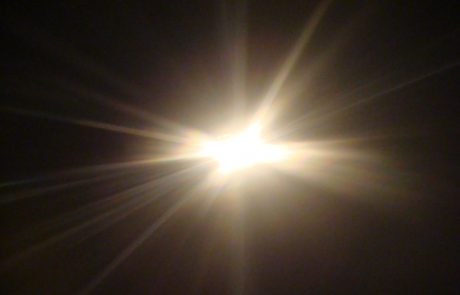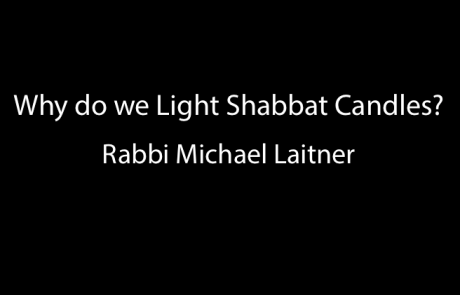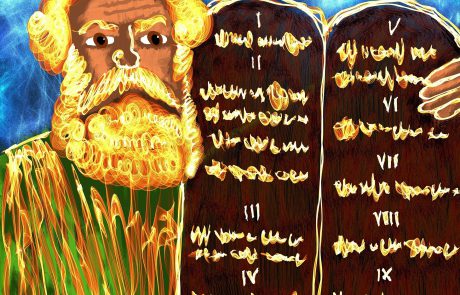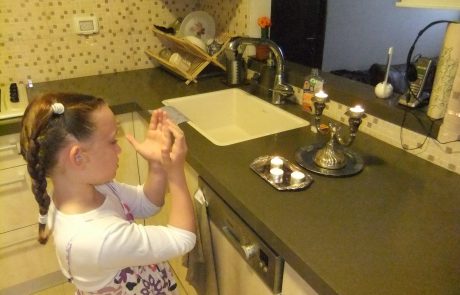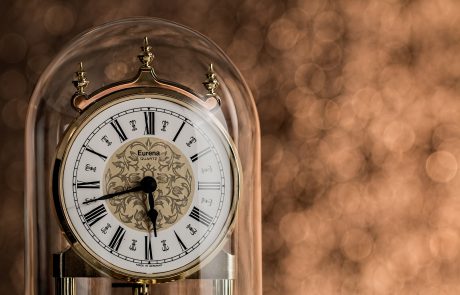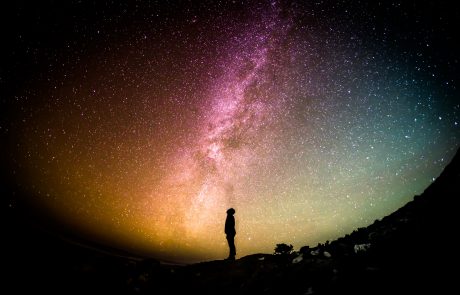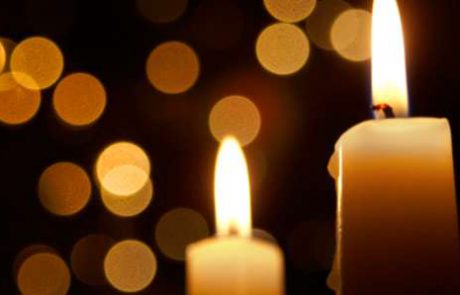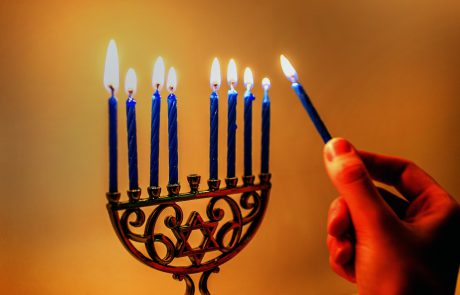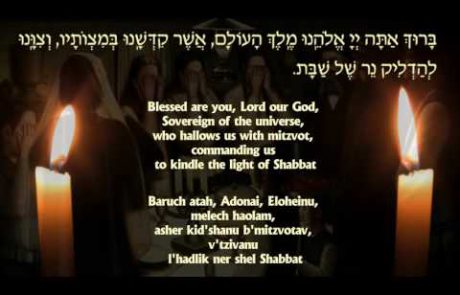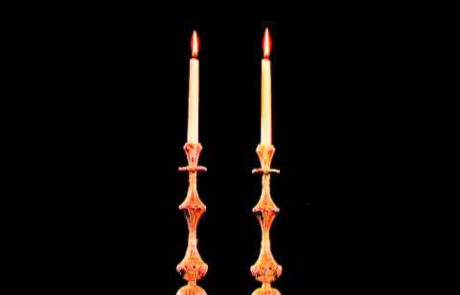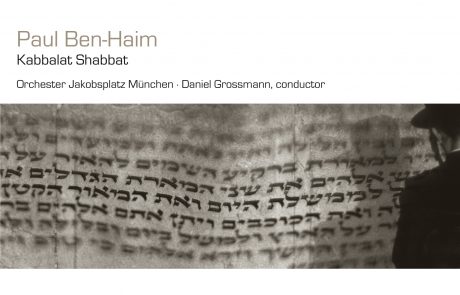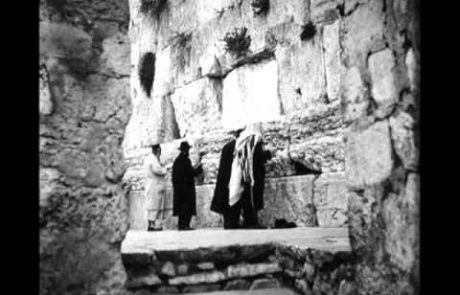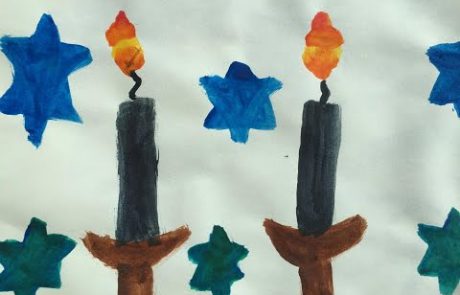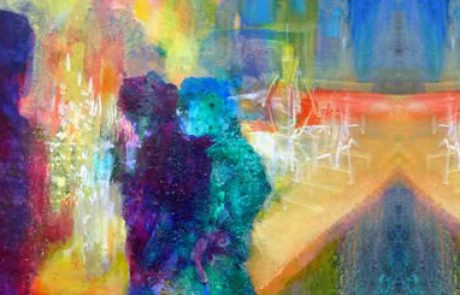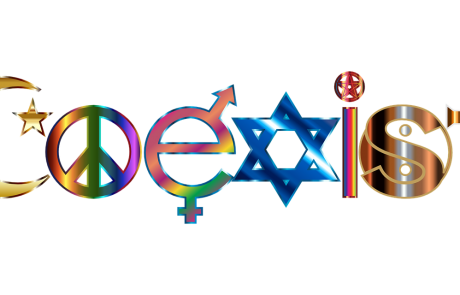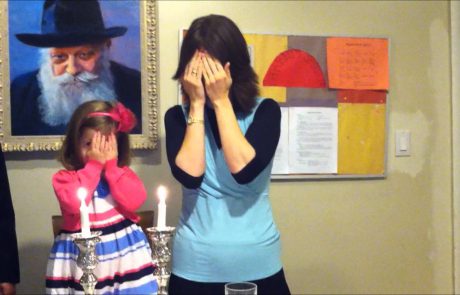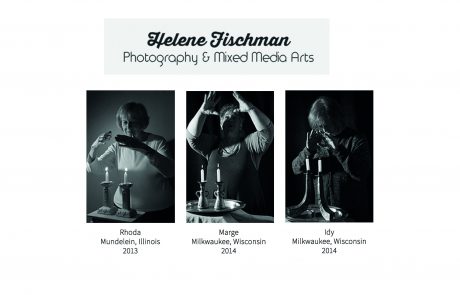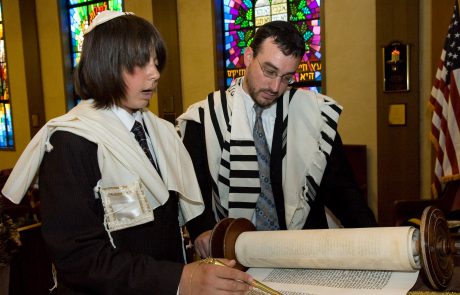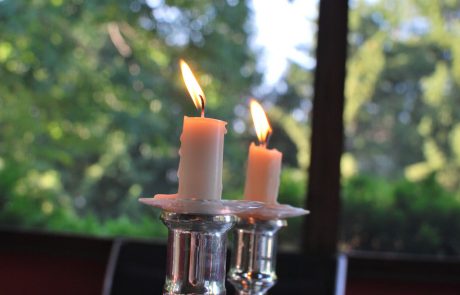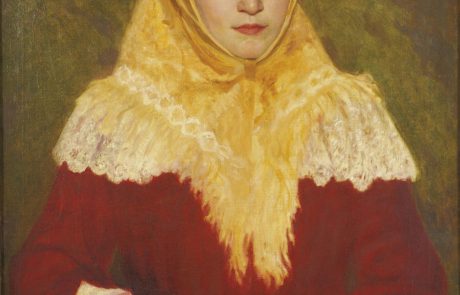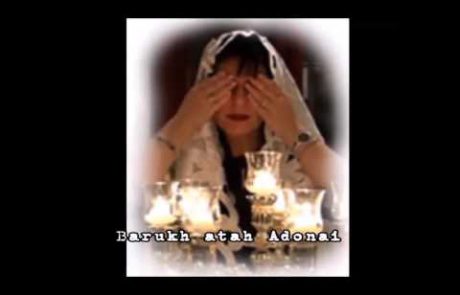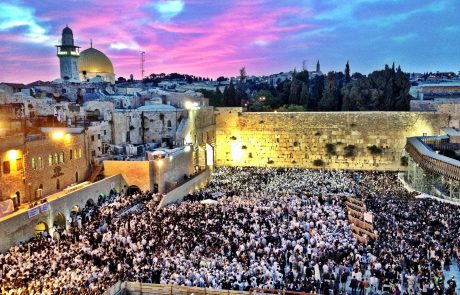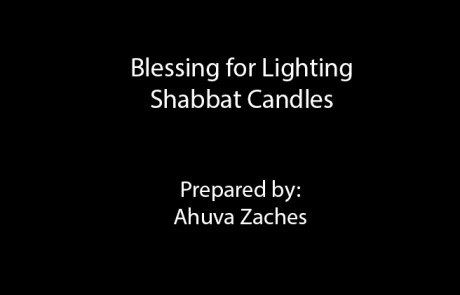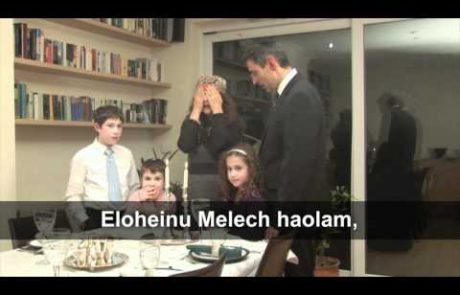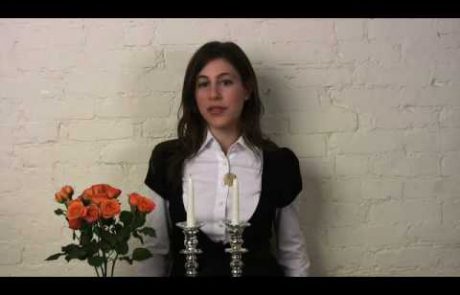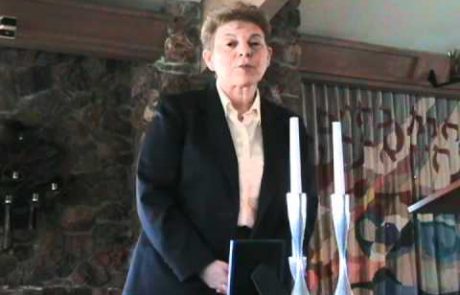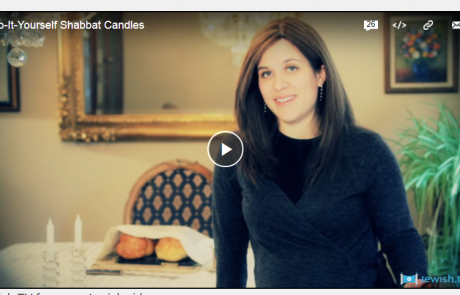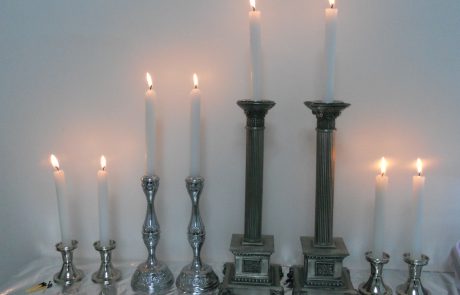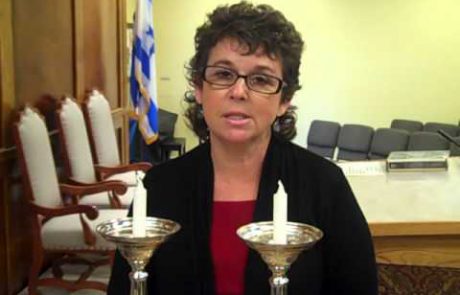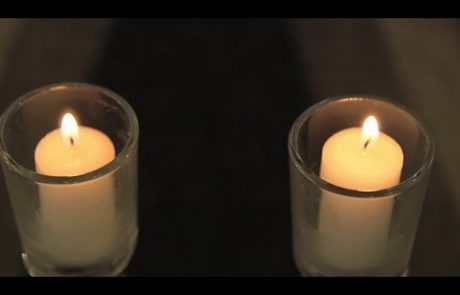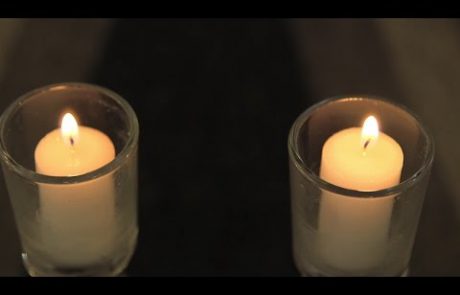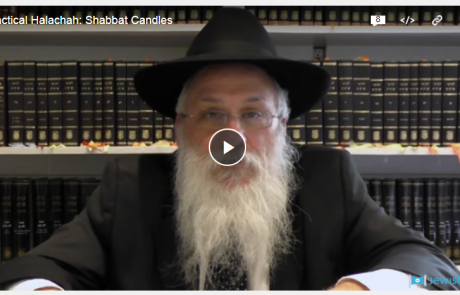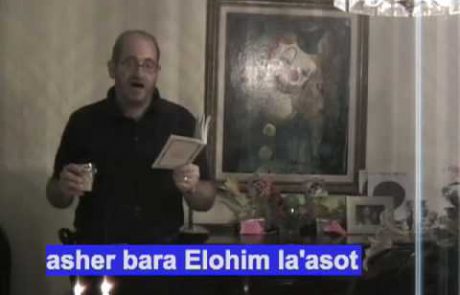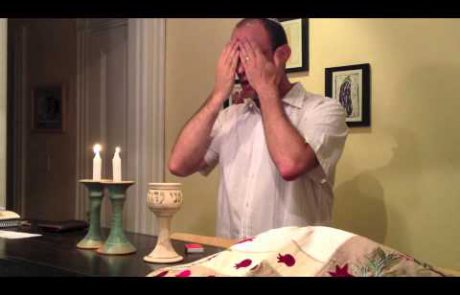
Shabbat Candles
The commandment to light Shabbat candles was established by the Sages in the first centuries CE. Although there are many different explanations provided for this ritual, they all stem from the importance of light in home life in a time where there was no electricity.
So why do we continue to light Shabbat candles today? One possible answer is that the light of the Shabbat candles – and perhaps Shabbat in and of itself – can be meaningful for us in a much deeper way, on both a personal and national level.
Light is first mentioned in the Torah in the Creation story in the Book of Genesis. On the first day of Creation, God did not create light, but rather separated between light and darkness. On the fourth day, He created the luminaries in the sky that distinguish between day and night. God made sure that there would always be light in our word – from the sun during the day and from the moon and stars at night.
From the moment of Creation, light took on both symbolic and tangible meanings. On a symbolic level, light is often seen as a positive entity that embodies ideas such as kindness, peace, truth, and justice. On a material level, it is a means of expressing the sanctity of time or space: the menorah in the Temple, the Shabbat, Havdalah and Hannukah candles, the Lag B’Omer bonfire, and more.
That being said, the main function of the Shabbat candles is to illuminate the home with the Shabbat atmosphere. It is customary to light at least two candles, but some have the tradition to light seven candles or the same number as there are people in the family.
E-Learning
Click here to show more E-Learning content ↓
Sacred Ritual: Lighting Shabbat Candles
This short article serves as an introduction to the basics of the candle lighting ceremony, including who lights candles, with what type of candles, when, and how, plus a mention of
The Meaning Behind the Flames
In this comprehensive article, Rhona Lewis shares many of the deep spiritual and kabbalistic teachings behind the mitzvah of lighting Shabbat candles. Using a wide variety of Biblical, Talmudic, halachic
Lighting Candles as a Way to “Unplug” from Distraction and “Plug in” to Shabbat
In this short video, Rabbi Noa Kushner encourages people to use Shabbat – and particularly, candle lighting- as an opportunity to “unplug” from the distractions and tasks of daily life
Covering Our Eyes During Shabbat Candle Lighting
This post explains the halachic reasoning behind the popular custom of covering one’s eyes while reciting the blessing after lighting the Shabbat candles. The author, Rabbi Howard Markose, is a
Rabbi Abraham Joshua Heschel Quotes on Shabbat Candles
These poetic quotes from Rabbi Abraham Joshua Heschel describe the moment when Shabbat arrives, bringing with it an atmosphere of light, peace, rest, joy, and renewal. Heschel points to the creative and
Women in Judaism: Lighting Shabbat Candles
This article explains how lighting Shabbat candles brings peace and harmony into the home, both practically and symbolically, and why this ritual is connected to the unique role of women in
Be the Light: The Power of Fire in Judaism
Fire plays an essential role in Jewish ritual, from lighting candles to welcome Shabbat and holidays, during the Havdalah ceremony, on Hannukah, and on the anniversary of a loved one’s
Rabbi Abraham Twerski: Candle Lighting and a Child’s Self Worth
In this short post, Rabbi Abraham Twerski relays his childhood memories of his mother lighting the Shabbat candles, focusing on the powerful message they sent about his own inherent self
Shabbat Home Ritual: Candle Lighting
In this short post, Sarah Fishman describes the basics of the candle lighting ceremony, as part of an article introducing the Shabbat home rituals of candle lighting, kiddush over wine,
Reb Zalman Schachter Shalomi: Shabbat Candle Lighting as a Lesson in Faith
This interview describes how watching his mother light Shabbat candles was a formative spiritual experience for Reb Zalman Schacther Shalomi, one of the founders of the Jewish Renewal movement, which
An Academic Approach to the Meaning of Shabbat Candles
In this highly sourced academic article, Dr. Ismar Schorsch explores how and why lighting Shabbat candles is of paramount importance in Jewish tradition, despite the fact that it is actually not
Shabbat Candles: Why is it Called ‘A Women’s Mitzvah?’
This article, reprinted on My Jewish Learning from JOFA, the Jewish Orthodox Feminist Alliance, mentions a variety of candle lighting customs, including how many candles to light, the order of lighting
Lighting Candles: A Spiritual Cure-all
In this thought-provoking article, psychologist, Dr. Miriam Biber, explores the unique spiritual power of lighting the Shabbat candles through personal anecdotes and biblical, Talmudic and Chassidic sources. Described as a prototype for all of
The Connection Between Giving Tzedakah and Shabbat Candle Lighting
The following article describes the practice of giving tzedakah (charity) before lighting the Shabbat evening candles, along with an explanation as to how these two actions are intrinsically connected. This
The History of Lighting the Shabbat Candles
In this excerpt from the article, “Lighting Sabbath Candles,” Avi Lazerson discusses the historical and textual explanations for the commandment of lighting the Shabbat evening candles. He explains how this ritual was
Candle Lighting: The Test of Time
The following excerpt from the article “Truth Stands the Test of Time” explains how the Shabbat candles are symbolic of the truth and authenticity of the Torah and the Jewish
Candle Lighting: A Blessing or a Curse to Women?
In the following excerpt from Wendy I. Zierler’s article, “Shedding Feminist Light on the Sabbath Candles,” Zierler explores the possibility that the commandment for women to light the Shabbat evening
Reconstructionist Thought on Candle Lighting
In this short excerpt from the essay “Exploring Judaism: A Reconstructionist Approach,” Shabbat candle lighting is expounded on as an example of the importance of ritual within Reconstructionist Judaism. Reconstructionist Judaism
Shabbat Candles as a Revelation of the Hidden Light of Creation
The following excerpt is a translation and explanation of a Hasidic text relating to Shabbat candle lighting, from The Sabbath Soul: Mystical Reflections on the Transformative Power of Holy Time by Eitan
The History and Symbolism of Lighting Shabbat Candles
In this short, informative video, Rabbi Michael Laitner offers both historical and spiritual explanations for the Shabbat evening candle lighting and provides guidelines on how to fulfill the commandment. This video
Waving the Hands Before Candle Lighting: A Kabbalistic Understanding
This short post explores the Halachic (Jewish law) and Kabbalistic (Jewish mysticism) explanations as to why those lighting the Shabbat evening candles wave their hands three times over the lit candles
Shabbat Candle Lighting: Empowering or Restricting to Women?
The following article addresses whether the tradition of women lighting Shabbat candles is empowering or restricting. The anonymous author explores the role of women in Orthodox Judaism, drawing on both Jewish
“Shamor” and “Zachor”: Observe and Remember
This blog post by Rabbi Adam Feldman explores the dual language of “shamor” and “zachor” used in the Torah to command the Jewish people to “remember” and “observe” Shabbat. Jewish
A Woman Before God: Candle Lighting Throughout the Generations
This article discusses the strong feminine aspect of the candle lighting ritual, including how various traditions which have been handed down from generation to generation through family matriarchs have gained halachic
HuffPost Blog: “Going Dark” on Shabbat
In this blog post, Ellie Krupnick shares her personal journey of coming to appreciate the refuge from technology and work offered by Shabbat. Although not specifically about the candle lighting ritual,
Shabbat Observance in Alaska: Lighting Shabbat Candles Without Sunset
In this article, Rabbi Dov Gartenberg shares his thoughts and halachic insights about Shabbat observance when living in Alaska, where during certain times of the year, the sun does not
Switching On Shabbat: Temples in Time
Referencing Jewish thinkers Rabbi Abraham Joshua Heschel and Blu Greenberg, this article describes lighting the Shabbat candles as a transformative act that enables us to create temples in time, thus
Sarah’s Light: The Candles that Never Waned
This enlightening article explores the age old connection between Jewish women and Shabbat candles, explaining references to the Matriarch, Sarah, lighting Shabbat candles in the Torah and Midrash. The article delves into
Candle Lighting as a Spiritual Union
This piece provides a mystical explanation of the Shabbat candle lighting ritual, applying ancient Kabbalistic concepts in a way that is relevant for modern Jews. Written by Rabbi Goldie Milgram, a
The Sabbath as a Journey Through the Worlds
In this piece, the author describes Shabbat as a holistic experience, beginning with the lighting of the Shabbat candles. She suggests that the two candles represent different dualistic aspects we
OneTable Shabbat Dinner Guide
Created by OneTable, a grassroots organization whose goal it is to help people enjoy Shabbat dinners together, the guide (39 pages) to the Friday night dinner experience provides both inspiration and optional
The Significance of Fire in Judaism
This excerpt notes the universally recognized power of fire, as well as its particular significance in Jewish ritual, such as lighting Shabbat and Hannukah candles and the Havdalah ceremony. It
The Power of Light in Judaism
Inspired by both nature and Jewish mysticism, this short article explores the physical and spiritual power of light in Jewish tradition as well as our own personal experience. Originally from Wellsprings of
Music
Click here to show more Music content ↓
“V’zakeini” Song: A Post Candle Lighting Prayer (Avraham Fried)
In this heartfelt song, “V’zakeini,” Avraham Fried puts an excerpt from the prayer commonly recited after lighting Shabbat candles to music. The lyrics, posted below in Hebrew, English and transliteration, are
Alexander Goldscheider’s Tune for the Blessing over the Shabbat Candles
In this video, Alexander Goldscheider, a Jewish Czech-born composer, performs a unique musical rendition of the blessing over the Shabbat candles. Golscheider’s uses lyrical repetition and rising notes throughout the melody
“Tell Me Mother:” A Song About a Mother’s Prayer while Lighting the Shabbat Candles
This moving Hebrew song is about a young girl who asks her mother what she is thinking about while she lights the Shabbat candles. In answering her daughter’s question, the mother
Fiddler on the Roof: A Sabbath Prayer
This video is a clip from the 1971 film, Fiddler on the Roof, where Tevye and his family gather to light the Shabbat candles and welcome the Sabbath. Tevye’s wife,
Shabbat Sweet: A Unique Melody for Shabbat Candle Lighting
In this video, Billy Kaplan offers a unique rendition of the blessing over the Shabbat candles (starting at 1:05), including a post-blessing message of hope. In his blessing, the singer
Paul Ben-Haim’s Rendition of the Blessing Over the Shabbat Candles (Reform)
This audio clip (the second track on the album, “Sacred Services from Israel”), demonstrates an operatic version of the blessing over the Shabbat evening candles according to Reform tradition. Paul Ben-Haim
“V’zakeini” Song: A Post Candle Lighting Prayer (Rabbi Baruch Levine)
In his heartfelt signature song, “V’zakeini,” Rabbi Baruch Levine puts an excerpt from the prayer commonly recited after lighting Shabbat candles to music. The lyrics, posted below in Hebrew, English and transliteration,
Shabbat Candle Lighting: A Children’s Sing Along
This sweet video presents Kindergarten and Second Grade students from Temple Isaiah of Lafayette, California singing the blessing over the candles, as the transliterated text of the blessing scrolls over watercolor pictures painted by
What Else?
Click here to show more What Else? content ↓
A Shabbat Eve Meditation: Breathing Exercises around Shabbat Candle Lighting
This is a short poem written to guide a group meditation at the time of welcoming Shabbat, either before or after candle lighting. It encourages group members to focus on
Zelda: To Light Candles in All the Worlds
In this poem, the modern Hebrew poet, Zelda, describes the meaning of Shabbat candles. Her understanding of the Shabbat candles as a reminder of the redemptive power of light reflects
Bella Chagall’s “Burning Lights:” A Recollection
In this excerpt from the book “Burning Lights: A Unique Double Portrait of Russia,” Bella Chagall describes a detailed accounting from her childhood of what the Shabbat candle lighting ceremony
Shabbat Candle Lighting Source Sheet
This resource, helpful for educators and those with background in reading Jewish texts, is both an educational worksheet and a collection of sources about lighting Shabbat candles. Created by Rabbi David
“If I Let It” – Poem Preceding Shabbat Candle Lighting
This short poem by Trisha Arlin provides a “kavanah,” – a direction in which to focus one’s attention – to be utilized when welcoming Shabbat. The poem mentions many ways in
Shabbat Candles Across History
The following video offers a wordless demonstration of women lighting the Shabbat candles from Canaan (the biblical reference for Ancient Israel) 2200 BCE to the present day. Created by Rabbi
Pre-Candle-Lighting Tzedakah Custom for Children
This short post suggests a creative way to involve children in the custom of giving charity before lighting Shabbat candles. Originally published in “A Kolot Egalitarian Bentcher: Shabbat Blessings and
Senator Joe Lieberman: On Candle Lighting
In this short post, former American Senator Joe Lieberman describes the candle lighting experience in his own home, including several ideas that make it personally meaningful. Although the quotes are
Are Your Shabbat Candles Toxic?
In this article, Lisa Rose, a Nutritional Therapy Practitioner, outlines some of the health and environmental issues associated with burning candles in the home, and then offers safe, healthy alternatives for
Electric Shabbat Candles: It Can Be Done!
This lengthy, comprehensive article provides information about “LeeNer,” a product which provides a way to light electric candles for Shabbat in a manner that is considered halachically acceptably by many authorities
Lighting Candles for Peace: A Sheikha and a Rabbi
This short poem, written by two women – a Jewish rabbi and Muslim sheikha – calls on readers to light a candle in their homes and houses of worship on Friday, the day
Young Girl Lights Her First Shabbat Candle
In this sweet seven-minute home video a young girl receives a silver Shabbat candlestick in a package in the mail from her grandparents just prior to her third birthday. According to the Hasidic
“Blessed is the Match”: A Poem by Hannah Senesh
The following poem, “Blessed is the Match” by Hannah Senesh, describes the human soul as analogous to a match that is desperate to spread its light to other flames. Although not
Shabbat Candle Lighting Blessing in ASL
This video demonstrates how to sign the Shabbat candle lighting blessing in American Sign Language, which is especially helpful for those who are deaf or hard of hearing and those seeking
Kindling the Lights of Peace: A Meditation for Shabbat Candle Lighting
In this article, Rabbi Leah Doberne-Schor encourages readers to pray for peace when lighting the Shabbat candles. She includes a poetic meditation, which mentions those suffering from war and injustice
Shabbat Observance in Alaska: Lighting Shabbat Candles Without Sunset
In this article, Rabbi Dov Gartenberg shares his thoughts and halachic insights about Shabbat observance when living in Alaska, where during certain times of the year, the sun does not
Candle Lighting Photography Project
In this creative project, artist Helene Fischman presents photographs of women lighting Shabbat candles. Her inspiration comes from both the transformative power of the ritual itself and its significance as an
Mayim Bialik: How Many Shabbat Candles Does a Divorced Woman Light?
In this article, actor and neuroscientist Mayim Bialik shares her personal experiences of motherhood and divorce in relation to lighting the Shabbat Candles. This article appeared on Kveller.com, a website
Schindler’s List: The Vanishing Shabbat Light
This video is the opening scene of Steven Spielberg’s much hailed film, “Schindler’s List.” Shabbat candles are lit in the presence of the family and the blessing is recited over the
Fiddler on the Roof: A Sabbath Prayer
This video is a clip from the 1971 film, Fiddler on the Roof, where Tevye and his family gather to light the Shabbat candles and welcome the Sabbath. Tevye’s wife,
“Imma Shel Shabbat” (“The Shabbat Mother”)
In the first minute of this short and sweet home video in Hebrew, watch a little girl named Shiri recite the blessing over the Shabbat candles in preschool. In many Israeli
Shlomo Carlebach: The Shabbat Candles Story
In this 12 minute long audio recording, Rabbi Shlomo Carlebach tells an inspirational story, centered on the Shabbat candles. A narrative of hope and resilience, the story is about a young
Shalom Sesame: Learn About Shabbat with Grover
In this sweet, amusing video, Grover learns about Shabbat on “Shalom Sesame,” the Israeli version of the popular children’s television series, “Sesame Street.” Grover helps his friend prepare for Shabbat
Israeli Family Performs Kiddush and Candle Lighting
This home video shows an Israeli family in the Galilee performing traditional Shabbat rituals around the table, including the lighting of the Shabbat candles and the recitation of the Kiddush.
Mother’s Prayer for Bar/Bat Mitzvah Upon Lighting Shabbat Candles
This short English prayer is recited by a mother prior to blessing the candles on the Shabbat celebrating her son/daughter’s Bar/Bat Mitzvah. The time of lighting Shabbat candles is considering
Rituals & Ceremonies
Click here to show more Rituals & Ceremonies content ↓
Shabbat Candle Lighting Blessing: Audio and Text
This audio recording demonstrates a man singing the blessing over the Shabbat candles clearly and slowly, using a popular North American melody, which was composed by Abraham Binder, musical director of the
Personal Prayer and Meditation For Candle Lighting
This short article explains the tradition of reciting personal prayers during the time of candle lighting and also suggests meditating on mystical ideas about fire. Originally from Wellsprings of Wisdom, a
Traditional Prayer for the Family Following Candle Lighting
This prayer for the family is often recited after lighting the Shabbat candles, an auspicious time for prayer, according to Jewish tradition. Many women use this as an opportunity to
A Reconstructionist Reflection Before Lighting Shabbat Candles
This short reflection, recited prior to light Shabbat candles, is written by Jewish-American poet, Marge Piercy, and appears in the Reconstructionist Kol Haneshama siddur. It encourages the reader to be
Post-Candle Lighting “Tkhine”: An 18th Century Prayer
This short “tkhine” (supplication) is a para-liturgical prayer that is meant to be recited by women just after lighting Shabbat candles, an auspicious time for personal prayer. The words express a
Sephardic Tradition: Friday Night Candle Lighting
In this Hebrew clip (at 1:00), Inbar Tabiv demonstrates how to light the Shabbat candles, first reciting the blessing and then kindling the candles according to the tradition of many
The Confusion of Sephardic, North African and Middle Eastern Customs
In her humorous, anecdotal style, Daniella Levy reveals the confusion that surrounds the specific customs of lighting Shabbat candles in the Sephardic, North African and Middle Eastern traditions. This post
Shabbat Candle Lighting with Masculine and Feminine God-Language
This post presents the blessing for lighting the Shabbat candles on Friday night, both in its traditional format (i.e. with masculine God-language) and using feminine God-language, an option that reflects
Humanistic Liturgy for Lighting Shabbat Candles
This Shabbat candle lighting ceremony was composed by Machar: The Washington Congregation for Secular Humanistic Judaism. Typical of this movement, founded in 1963 by the late Rabbi Sherwin T. Wine, the
The Blessing for the Shabbat Candles
This short video demonstrates a woman singing the blessing over the Shabbat candles while transliterated English subtitles are displayed over emotive pictures of women blessing the candles in the background.
Shabbat Candle Blessing
In this short video, Cantor Marnie Camhi first sings and then recites the blessing over the Shabbat candles. In a slow, clear and pleasant voice, she sings the blessing using a
Prayer for the Rebuilding of the Temple After Candle Lighting
There is a custom to recite this prayer for the rebuilding of the Temple in Jerusalem after making the blessing over the Shabbat candles. This is the same prayer that
Traditional Practices - Learn How
Click here to show more Traditional Practices - Learn How content ↓
Learn the Candle Lighting Blessing with “Prayer-eoke”
This video demonstrates the singing of the blessing over the Shabbat candles clearly and slowly with Hebrew and transliterated subtitles. The video was created by Rabbi Ahuva Zaches of Congregation Or Ami (Reform)
Rabbi Jonathan Sacks on How and Why to Light the Candles
The following video from Jewish Online Guides, an educational initiative by The United Synagogue, explores the lighting of the Shabbat candles according to Orthodox Ashkenazi tradition. Complete with an introduction
How to Light Shabbat Candles: Kabbalistic Wisdom
This video describes how to light the Friday evening Shabbat candles according to the Orthodox Ashkenazi tradition. In addition to the recitation of the blessing, this video provides explanations of the meaning
Shabbat Candles FAQ
This article contains clear and detailed answers, according to an Orthodox Jewish perspective, to a number of frequently asked questions about lighting Shabbat candles on Friday night, including who, when,
How to Light Shabbat Candles: Bringing Light to your Family
This video, by Rabbi Janet Ross Marder, describes how to light the Shabbat evening candles, with a focus on bringing light and peace to your home and family. Rabbi Marder
Chabad: How to Light Shabbat Candles
This short instructional video describes and illustrates step-by-step instructions on how to light the Friday night Shabbat candles at home. This video is complete with the recitation of the blessing that is said over
A Guide to Candle Lighting + Lighting Candles in Auschwitz
This two-page resource includes a simple explanation of how to light the Shabbat candles according to the Ashkenazic custom, the Hebrew, English and transliterated texts of both the blessing and
Shabbat Candle Lighting: An Introduction
The following article briefly explains the basic structure of the candle lighting ceremony and some related customs, including the text of the blessing in Hebrew, English translation and transliteration. The
Detailed Guide to Shabbat Candles in Jewish Law
This is a highly technical article about the laws of lighting Shabbat candles according to Orthdox halacha, meant for those who are familiar with Jewish legal terminology in Hebrew. It
Candle Lighting Times
This short article explains exactly when to light Shabbat candles, according to Orthodox halacha, as well as what one can do if they have missed the lighting time. It includes additional resources
How to Light Shabbat Candles: Reform Tradition & Customs
This video demonstrates how to light the Shabbat candles and recite the blessing according to the Reform tradition. In the first of a series of instructional videos, Rabbi Betsy Torop discusses
Introduction: How to Light the Shabbat Candles
This introductory video provides a step-by-step explanation on how to light the Shabbat evening candles according to Asheknazic tradition, using captions, pictures, and music to capture the magical ambience of lighting the
A Beginners’ Guide to Shabbat Candle Lighting: Article and Video
The following article, How to Light Shabbat Candles, by Rabbi Michael Strassfeld, Richard Siegel and Sharon Strassfeld, discusses both the how to’s of the Shabbat candle lighting ceremony and the
Lighting Candles: A ‘How-to’ for Kids
This karaoke video demonstrates how to light the Shabbat candles, including subtitles in Hebrew as well as the translation and transliteration in English. While specifically aimed at children, this video is helpful
Chabad: How and Why We Light the Shabbat Candles
In this 18 min. lecture, Rabbi Yosef Shusterman, renowned Chabad rabbi and authority on Jewish law and Hassidut, gives an extensive overview of the practical how to’s of the lighting
Aish: How To Light Shabbat Candles
The following ‘how to’ video provides step-by-step instructions on how to light the Friday night Shabbat candles according to the Orthodox Ashkenazic tradition and pronunciation, complete with the recitation of the
How to Light Shabbat Candles: Conservative Tradition
This article provides a concise overview of the ritual of lighting Shabbat candles in the home on Friday night, including where, when, by whom, and how the candles should be
Candle Lighting with Rabbi Eli Garfinkel
In the first 49 seconds of this brief homemade instructional video, Rabbi Eli Garfinkel demonstrates how to light the Shabbat candles and recite the blessing according to the Asheknazic tradition,
Shabbat Blessings over the Candles, Wine and Challah
In this short, well-produced video, Rabbi Matt Soffer explains and demonstrates the Shabbat blessings over the candles, wine and bread (challah), according to Ashkenazic custom. Rabbi Soffer, the rabbi of
Click here to show less Traditional Practices - Learn How content ↑

